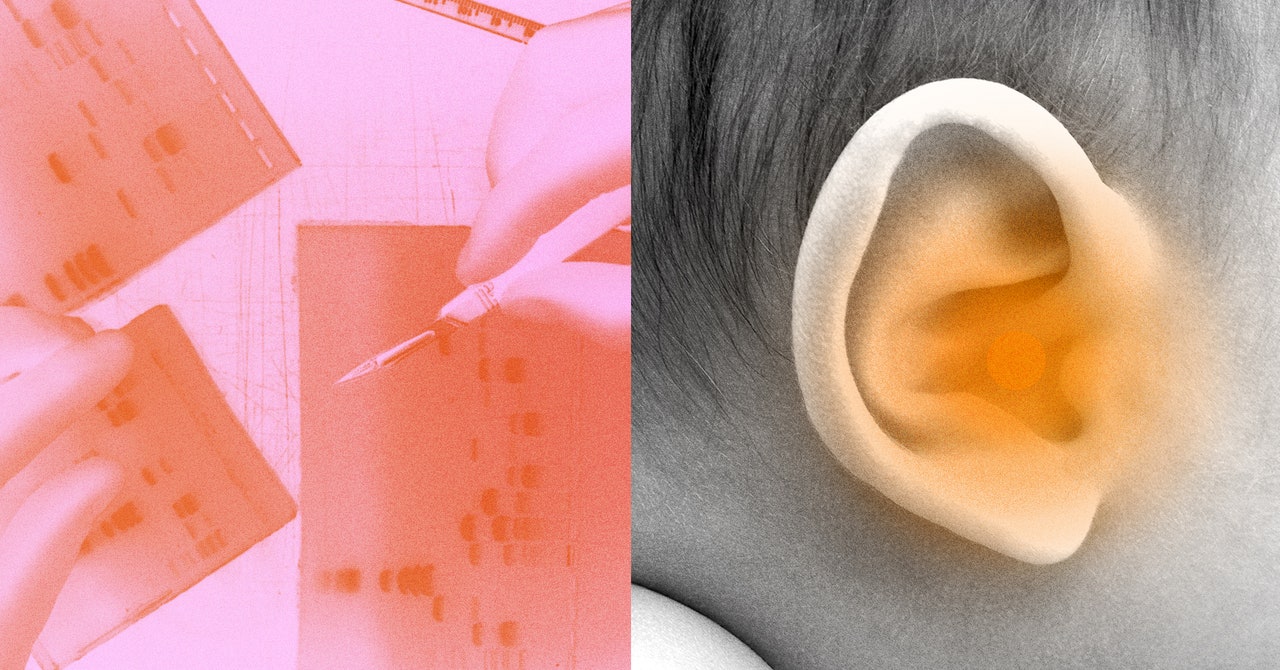Pay walled.
Born deaf, the 1-year-old boy had never responded to sound or speech before. But after receiving an experimental treatment injected into one of his ears, he started turning his head when his parents called his name. Five months later, he spoke his first words.
The boy is one of six children with a type of hereditary deafness who are part of a gene therapy trial in China. Five of the children can now hear, according to results reported today in the scientific journal The Lancet. The news follows an announcement this week that yet another child born with profound deafness can hear after receiving a similar treatment developed by US drugmaker Eli Lilly.
“It’s remarkable,” says Lawrence Lustig, a hearing loss expert at Columbia University who was not involved in the trial. “We’ve never had a therapy that restores even partial hearing for someone who’s totally deaf other than a cochlear implant.”
The children were all born with a mutation in a gene that makes a protein needed for hearing called otoferlin. We hear things when sound waves in the air cause the thousands of sensory hair cells in our inner ears to vibrate and release a chemical that relays that information to the brain. Otoferlin is necessary for the release of this chemical messenger. Without it, the ear can’t communicate with the brain.
More than half of hearing loss cases in children are due to genetic causes, and otoferlin mutations account for 1 to 8 percent of those, affecting about 200,000 people worldwide.
The treatment the children received works by delivering a working version of the otoferlin gene to the inner ear. The cells of the inner ear then read this gene and produce the protein. In the US and Europe, a handful of these cutting-edge therapies have been approved, including one for a type of inherited blindness. Given just once, they’re designed to correct disease-causing genes—hopefully permanently.
For the deafness treatment, researchers at the Eye & ENT Hospital of Fudan University in Shanghai collaborated with a team at Mass Ear and Eye, a Harvard-affiliated hospital in Boston.
To get the new genetic material into cells, they engineered harmless viruses to carry it. Doctors carefully injected a tiny amount of liquid containing the viruses into a part of the children’s inner ears called the cochlea, a spiral-shaped chamber that contains hair cells. The first patient in the trial received the gene therapy in December 2022. Researchers followed the participants, who ranged in age from 1 to 6 years old, for 23 weeks after treatment.
While the gene therapy did not give the children a “normal” level of hearing, they went from not hearing anything under 95 decibels—about as loud as a food processor or motorcycle—to perceiving sounds of around 45 decibels—the level of a typical conversation or the hum of a refrigerator.
“The families are very, very excited,” says Yilai Shu, a head and neck surgeon at the Eye & ENT Hospital of Fudan University and an author on the paper. For some of the parents, it’s the first time they’ve heard their children say “mama” or “baba” (Chinese for “papa”).
Other children in the study had previously received a cochlear implant in one ear and had already learned to speak. In those cases, doctors injected the gene therapy into their other ear. Cochlear implants are surgically implanted devices that stimulate the auditory nerve to provide a sense of sound to its wearer. The implants don’t reproduce natural hearing, though. The resulting sound can be robotic or distorted. And when they’re switched off, the wearer can’t hear at all.
With gene therapy, researchers are aiming to provide a natural sense of hearing. When they followed up with patients after the injection, they turned off the cochlear implants to assess how well the therapy was working in the children.
“They became more engaged and responsive. It’s like a change of personality,” says Zheng-Yi Chen, an associate scientist at Mass Eye and Ear, who co-led the study.
One child’s hearing didn’t improve at all. One explanation, Shu says, is that the child had preexisting immunity to the type of virus used to carry the new gene into the inner ear cells—meaning the treatment would have been destroyed by their immune system before it could take effect. It’s also possible that the dose was too low to be effective, Lustig says.
Several companies are pursuing gene therapies for this same cause of deafness. Boston-based Akouos, which was acquired by Eli Lilly in 2022, has treated two subjects in a clinical trial that began last year. Eli Lilly announced this week that one of those participants, an 11-year-old boy, could hear within 30 days of receiving an otoferlin gene therapy.
And in October, Regeneron’s Decibel Therapeutics in Boston reported improved auditory responses in one patient as part of an ongoing clinical trial. Otovia Therapeutics in China and Sensorion of France are working on similar treatments. The Fudan University trial reported today
Guess I cant watch then. Whats the point of this post exactly if I cant do the thing it asks me to?



